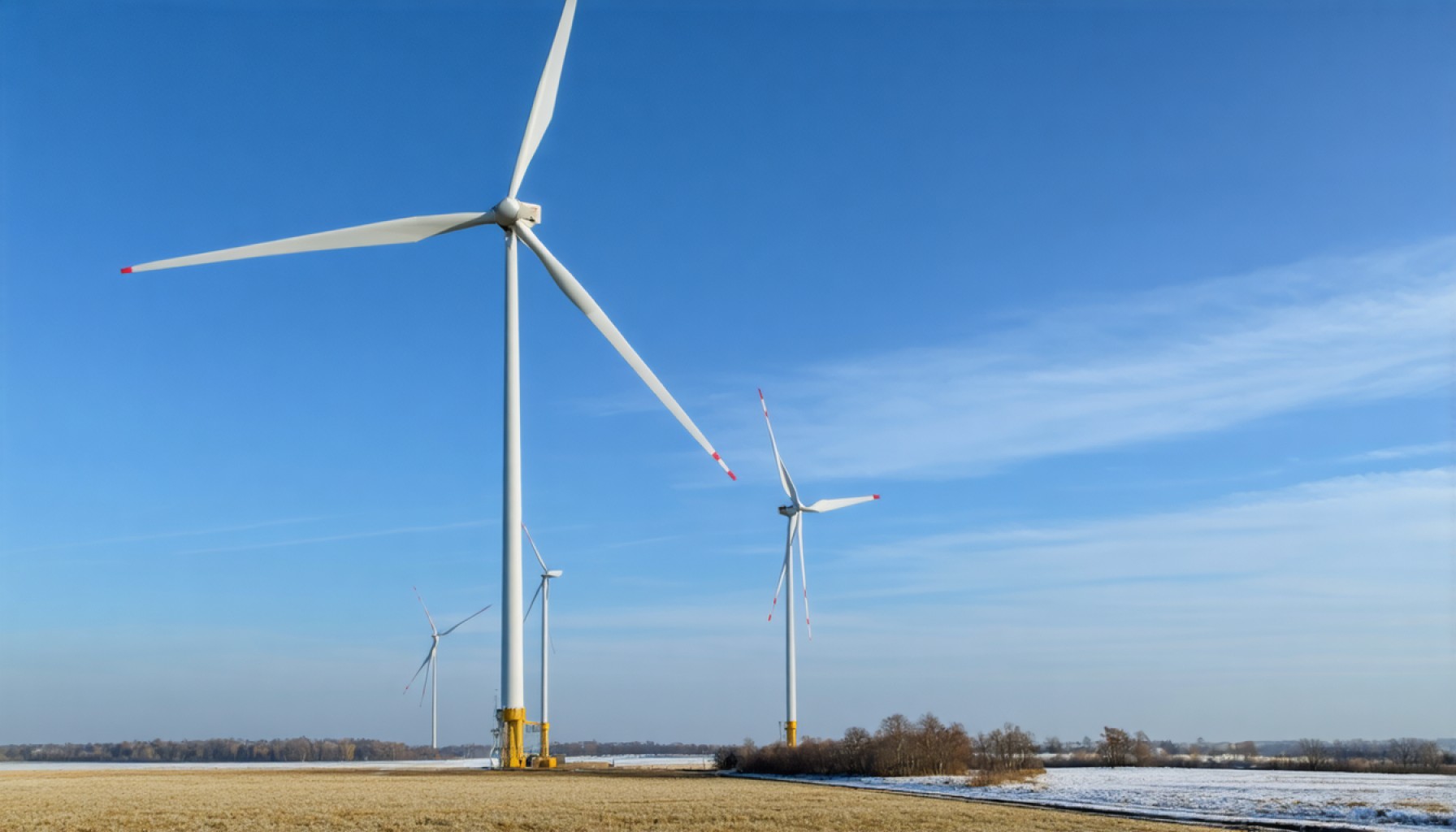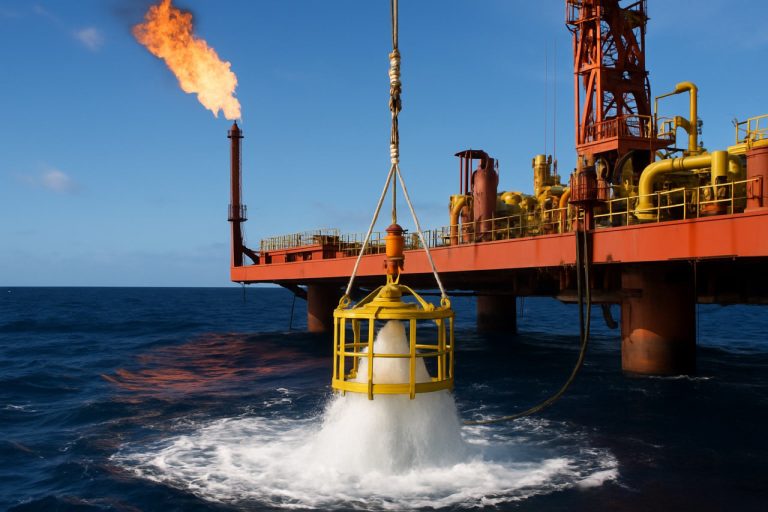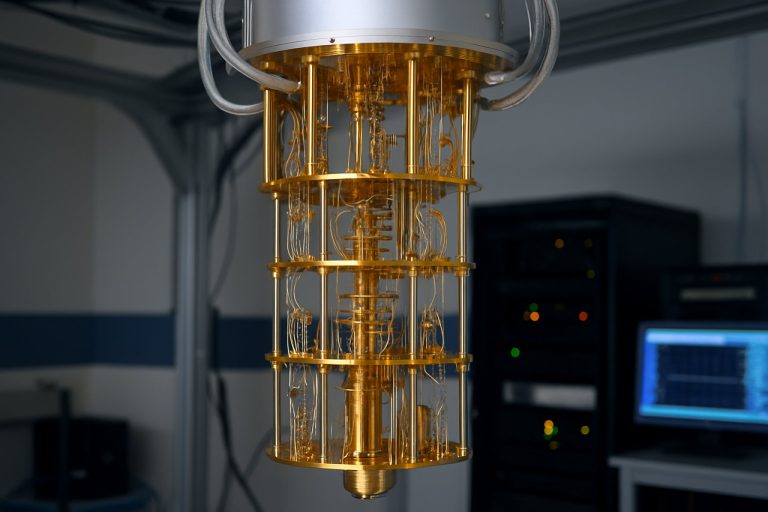
- Nova Scotia’s wind farm will host 16 Nordex turbines, each with a capacity of 5.9 megawatts, generating a total of 94 megawatts of renewable energy.
- The Advanced Anti-Icing System by Nordex enhances turbine performance in cold climates, turning ice challenges into manageable conditions.
- Wind turbines, requiring less space than traditional plants, integrate seamlessly into diverse landscapes, symbolizing a sustainable future.
- Wind energy supports economic growth, employing over 130,000 people in the U.S. and surpassing coal and natural gas sectors in employment.
- Consumers benefit from wind energy’s cost-efficiency, leading to potential savings on electricity bills.
- Wind energy emerges as a major environmental and economic force, representing innovation and sustainable change in the global climate conversation.
Amidst the rugged wilderness of Nova Scotia, a new frontier of renewable energy unfolds as 16 colossal wind turbines from Nordex Group prepare to rise. Each turbine, poised with an impressive capacity of 5.9 megawatts, forms the backbone of a wind farm projected to generate a staggering 94 megawatts of clean power. This initiative signals a transformative shift in the realm of renewable energy, particularly in cold weather climates where wind power has often faced challenges.
As the icy winds of the North promise a fresh start, Nordex Group, based in Hamburg, Germany, crafts an innovative narrative of resilience and technological brilliance. Their commitment to harnessing wind power in sub-zero temperatures emerges through the Advanced Anti-Icing System, an engineering marvel that combats the chilling grip of ice on rotor blades. This advancement turns the previously insurmountable foe of ice into a manageable hurdle, allowing turbines to spin relentlessly through winter’s harshest conditions.
With the wind rustling through forests and whispering over open plains, turbines command less space than traditional energy plants, seamlessly blending into various landscapes—from majestic mountain ridges to isolated offshore waters. These massive structures stand as sentinels of sustainability, symbolizing an eco-friendly future free from pollution. As sunlight dances off their towering blades, they quietly promise a cooler, cleaner existence.
Venturing beyond aesthetic appeal, the wind industry injects vigor into the economy, employing over 130,000 individuals across the United States, surpassing both coal and natural gas sectors. Each new wind project pours billions into the economy, fueling innovation and livelihoods alike. Consumers, too, stand to benefit, as the cost-efficient nature of wind energy invariably translates to savings on household electricity bills.
In an era where the climate narrative dominates global discourse, wind energy emerges not just as an environmental solution, but as an economic powerhouse and a pillar of innovation in unlikely terrains. The pioneering spirit that drove the installation of anti-icing technology fifteen years ago continues to propel Nordex to the forefront of sustainable solutions today, challenging perceptions and inspiring renewed optimism in renewable resources.
In the fleeting embrace of a windblown landscape, a revolution brews—promising not just a shift in how energy is produced but a profound transformation in how humanity interacts with its environment. The wheels of wind turbines spin a tale of change, empowerment, and a brighter future on the windswept path to sustainability.
Revolutionizing Energy: How Wind Turbines Are Transforming Cold Climates and Beyond
Understanding Wind Energy in Cold Climates
Wind energy has been challenging to harness in cold climates due to ice accumulation on rotor blades, which hampers efficiency. However, Nordex Group’s new Advanced Anti-Icing System has transformed these challenges into manageable situations, ensuring continuous operation despite sub-zero temperatures. This innovation allows wind turbines with a 5.9 MW capacity each to generate up to 94 MW of clean energy in Nova Scotia.
How-To Steps & Life Hacks
1. Maximize Efficiency in Cold Climates: Utilize anti-icing technologies to enhance turbine performance during winter months. This reduces downtime and maintenance costs.
2. Site Selection: Choose locations with consistent wind patterns for optimal output. Consider high elevation sites and coastal areas where wind speeds are typically higher.
3. Maintenance Scheduling: Plan routine maintenance during warmer months to minimize operational costs and maximize efficiency.
Real-World Use Cases
– Energy Independence: Communities in remote or cold regions can use advanced wind technology to reduce reliance on fossil fuels.
– Economic Impact: Wind farms create local jobs during construction and operation phases, boosting regional economies.
Market Forecasts & Industry Trends
The global wind power market is projected to grow steadily, driven by technological advancements and increased focus on sustainable energy sources. The adoption of anti-icing technology could unlock further growth in cold regions, expanding market possibilities.
Controversies & Limitations
Despite advancements, wind energy faces challenges such as wildlife impacts and landscape disruption. However, careful planning and emerging technologies continue to mitigate these issues.
Features, Specs & Pricing
– Turbine Capacity: 5.9 MW each
– Total Farm Capacity: 94 MW
– Technological Innovation: Advanced Anti-Icing System
Exact pricing of wind projects varies depending on location, installation costs, and government incentives.
Security & Sustainability
Wind energy is one of the most sustainable energy sources, with a small carbon footprint and no air pollutants. It also offers energy security by reducing dependency on imported fuels.
Pros & Cons Overview
Pros:
– Clean, renewable energy source
– Job creation and economic boost
– Advanced technology allows operation in diverse climates
Cons:
– Potential wildlife impacts
– Visual and noise concerns
FAQs
– What is the lifespan of a wind turbine? Typically, 20-25 years with proper maintenance.
– How do anti-icing systems work? They use electrical, thermal, or surface coating technologies to prevent ice formation on blades.
– Is wind energy cost-effective? Yes, it is one of the most cost-effective renewable energy sources, leading to lower electricity bills.
Actionable Recommendations
– Consider investing in newer turbine models equipped with anti-icing technology if located in a cold region.
– Support local wind projects through policy advocacy or community initiatives to accelerate renewable energy transition.
Quick Tips for Energy Savings
– Switch to renewable energy suppliers to reduce carbon footprint and energy costs.
– Implement energy efficiency measures at home to complement wind energy consumption.
For more insights into renewable energy advancements, visit Nordex Group.



